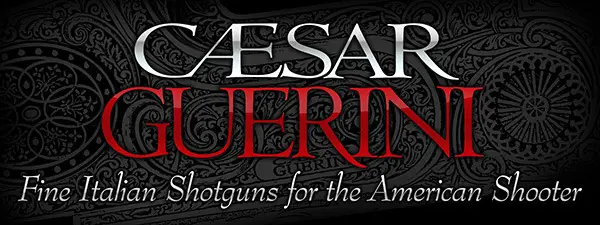


An Attempt at Common Sense with Shotguns
You might think that as common as common sense is supposed to be, everyone by now would essentially agree on the basics of wingshooting, clay-smashing, and shotguns by now. This would be a tremendous understatement, to say the least. Many of the most common questions I receive daily are unanswerable, or a matter of personal preference. In an effort to address several of the most common questions, I'll go down the line.
I.
The Best Barrel Length
Though often discussed, it isn't much of a question that is answerable.
Barrel length from what, exactly, and how many barrels? The barrel length
from an autoloader is a longer receiver / barrel length than from a side-by-side
or an O/U. Yet, barrel weight is just as important as the length to feel
and swing dynamics. With an O/U, it is “barrels length,” not
barrel length.
Shorter barrels of the same weight per inch and on the same action type and back-end are faster. Fast handling is good, particularly for flushing game or close range work . . . quail for example, and when the gun is carried low, way low, not just below a piece of tape. Shouldering and swinging cannot be easily compared to a planned, short target mount, or a premounted target mount. Barrel length alone does not determine gun weight, balance, or total shotgun dynamics, it is the entire firearm combined with your individual body. The only straight fact about a preference is that it is a preference, little else.
II.
Muzzle Flip
Muzzle flip, or lack-there-of, is often touted as an advantage. Yet, why
are we looking at the muzzle in the first place? One shotgun action, the
first successful autoloading action, the “long action” of the
Browning Automatic-Five, certainly reduces muzzle flip. The reason is
self-explanatory, as the barrel recoils straight back into the receiver.
Some folks claim not to like that, either, which still begs the question
why we might be so terribly fixated on the barrel.
Shotguns don't automatically have any muzzle rise or flip, it takes the firing of a shell against your shoulder to find it. Long guns, as a class, have little muzzle rise compared to a .44 RemMag snubnose revolver.
Though muzzle rise is used as a singular thing in ad copy, it isn't a standalone event. Long, heavy shotguns have little muzzle rise or recoil with target loads in the first place. It is only with heavier loads and lighter guns that it becomes worth talking about. With a soft durometer, easily deformed recoil pad, there is less muzzle rise. However, there is more rearward gun movement. That too can be equally or more annoying, if the stock is scraping your face or it feels like you are shooting a pogo stick. It is a trade-off, again a personal preference. The goal of all of this is rapid shot recovery time and fast second (or third) target acquisition.
III.
Recoil
We like to avoid the facts when it comes to recoil and some manufacturers
prefer that we avoid them as well. Heavy guns of the same action type
have less recoil.
Only two action types significantly attenuate recoil, for simple mechanical reasons: the long action (Automatic-Five) that acts as if there is a huge spring inside the forearm, because there is, and the gas-operated autoloader. As recoil is a product of mass and velocity out of the muzzle, the gas piston array of an autoloader also creates recoil based on mass in velocity, in the opposite direction. When you pull the trigger on a gas-operated autoloader, you are firing a gas piston assembly right back at yourself: reverse recoil.
For anyone with a functional human shoulder, it is self-evident that an economical Mossberg 930 at 7-3/4 pounds, a conventional gas-operated autoloader, has less recoil than any substantially lighter gun. For example, the 6-1/2 pound Browning new “A5” Hunter and the Benelli Ethos (6 lbs. 7 oz.) are both brutal kickers, by comparison. It is totally unsurprising.
Now, certainly, a 7-3/4 pound gun may not be a whole lot of fun chasing pheasants with (it isn't for me and never has been), and the Mossberg 930 may not be your version of shotgun style and elegance (it isn't mine, either), but the fact that the Mossberg 930 is mild-mannered and pleasant to shoot compared to 6-1/2 pound 12 gauges is as close the best available version of the truth as can be had.
IV.
Price and the old “You Get What You Pay For”
That is the worst advice that can possibly be given. If you pay for overpriced
junk, that's what you get. By nature, more expensive guns have less potential
buyers, so they have to be marked up a lot more, a whole lot more. It
costs just as much to advertise and distribute a low volume sales item
as it does a large market item, so those costs need to be paid for by
a small number of gun sales. The more you pay for branding, exclusivity,
and hyperbole, the less value you are going to get for your dollars.
It hardly means that upscale guns are guns to avoid, though, for the total cost of ownership may be no more and may be less. Shotgun shells don't care what they are fired out of, clay targets and game birds don't care what brand of anything whacks them, and neither range fees or hunting license and travel feels change based on what model or brand of shotgun you are using.
V.
The Gauge Story
Pellets don't care what type of tube you blow them out of. Patterns are
formed from payload weight more than any other factor, you aren't going
to get more pellets in a pattern than came out of the muzzle. High-efficiency
patterns come from quality shells and quality chokes, regardless of gauge.
Harder, more spherical shot is beneficial, regardless of gauge. You can
throw a 1 oz. load out of a 28 gauge, 20 gauge, 16 gauge, or a 12 gauge
. . . and it is still a 1 ounce load with the same pellet count. There
is no guarantee of anything, with any gauge, for pattern efficiency is
not directly related to gauge, but to shell and choke combination.
There is a limit, based on shotshell case capacity. If condemned to shoot soft iron (steel) shotshells, well yes, of course, you have a severe limitation in payload that may not be suitable for your hunting requirements. A 3-1/2 inch 12 gauge or a 10 gauge yield more room to cram low-density shot into, no doubt.
Larger gauges have their drawbacks as well: barrel bulk, receiver bulk, weight, and so forth. Shotgun manufacturers have struggled to get 12 gauges to the 6-1/2 pound mark, with allegedly slim lines, slim forearms, and so forth. Yet, 6 to 6-1/2 pound 3 inch 20 gauge have been commonplace for the last 50 years, without undue cost, bulk, or other compromises.
VI. Chokes and Patterns
The “better” pattern does not exist, for the same pattern can
be far better or far worse, contingent on the application. Breaking skeet
targets at 20 yards with huger numbers of #9 shot needs no constriction
at all. Some prefer reverse constriction, as a matter of fact. Yet, that
is exactly what you don't want to have a dead in the air rooster at 45
yards, to spin doves at 60 yards, much less to vaporize a turkey head
at 50 yards. It isn't just choke selection, it isn't just shell selection,
it is both . . . regardless of application or gauge.
When it comes to shotguns, there are no clinical, clean answers. There are very few rights or wrongs, everything is a compromise in some way. It isn't about what is “right,” it is about what is right for you and your own unique conditions and circumstances. Shotguns touted as “versatile” are often anything but. Being able to shoot a “wide variety of loads” is of dismal comfort when the gun cannot carry, handle, or shoulder any better or differently than just what it is.
But, that's the journey, the challenge, the sport of it all. Not to absolutely decide much of anything, but to discover what is the most enjoyable, effective, pleasurable combination (or combinations) for just one person . . . you.
Copyright 2014 by Randy Wakeman. All Rights Reserved.

Custom Search



